Matador Network's Blog, page 822
July 10, 2020
Disney World to reopen this weekend
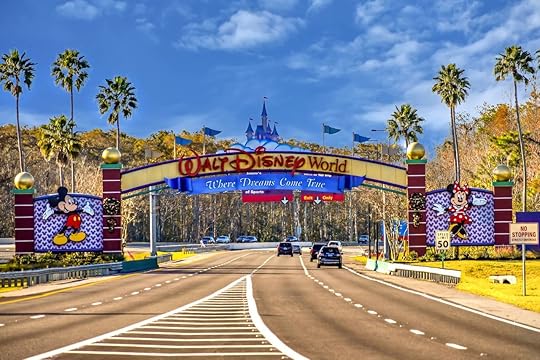
Even though Florida is the new epicenter of the coronavirus in the US, Disney World is moving ahead with plans to reopen this weekend. The Magic Kingdom and Animal Kingdom are scheduled to open on Saturday to guests with pre-booked reservations, while Epcot and Hollywood Studios will open on July 15.
Disney World’s reopening is a sharp contrast to Disneyland in California, whose planned reopening this month was delayed by an uptick in virus cases.
Matt Hollis, head of the Service Trades Council Union coalition (STCU), which represents Disney World employees, told The Guardian, “There’s absolutely people that are nervous, when you hear the reports of the virus, the statistics, but what they [the Disney employees] see every day is Disney taking the steps necessary to keep them and the guests safe. There’s certainly going to be a learning curve as we learn the new normal, but the cast members will do everything they can to adapt with the new measures designed to keep everyone safe.”
Disney World plans to reopen at reduced capacity, enforce strict social-distancing measures, and implement a rigorous cleaning regimen. Twenty thousand furloughed workers are returning to Disney World for the first phase of the reopening, and the STCU has arranged for two week’s paid quarantine for workers who become infected with, or are exposed to, the virus.
There is opposition to the reopening. As a nonessential business, many believe it’s irresponsible of Disney to reopen right now given the resurgence of cases in the state.
Governor Ron DeSantis, however, expressed confidence in Disney’s plans for reopening. “Disney, I have no doubt, is going to be a safe environment. I think that where you start to see the spread is just in social situations where people let their guard down. Usually like a private party or something like that.” 
More like thisTheme ParksWhen the sun sets over Disney World, the real fun begins
The post Disney World is set to reopen this weekend amid Florida COVID-19 surge appeared first on Matador Network.

Croatia welcoming back US tourists
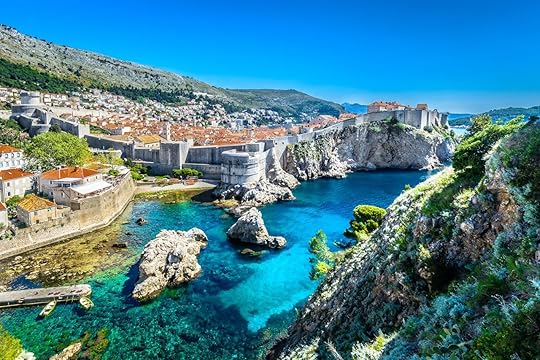
US travelers’ summer plans to head to Europe were trashed at the end of June when the EU announced it would bar Americans from entering the European Union because of the country’s poor handling of the COVID-19 pandemic. That’s still pretty much true, with one exception: Croatia.
The EU recently announced its recommendation that the bloc’s external borders would be closed to most nations. There was one loophole, however. The EU’s member states are free to ignore the recommendation, at the risk of facing repercussions from their neighbors. Croatia has decided to defy the EU’s recommendation and open its borders to US travelers starting on July 1.
According to the US Embassy in Zagreb, starting July 1, “foreign nationals, including US citizens, may enter Croatia for business, tourism, or other pressing personal reasons, if they provide relevant proof.”
This “proof” simply refers to a receipt of paid accommodation within the country, whether that be a hotel or Airbnb booking.
Ivan Vukovic, a licensed tour guide in Dubrovnik, told Forbes, “There have already been American tourists in Croatia cruising on their chartered yachts in the Adriatic. But now as of a couple of days ago, Croatia officially opened the borders to Americans.”
No COVID-19 test is required for entry, and travelers will not be asked to quarantine upon entering the country. If you’re planning to visit Croatia, all you’ll have to do is fill out an online registration form with some personal information, as well as a disclosure of whether you’ve been recently exposed to COVID-19. 
More like thisBeaches + IslandsThe 4 Croatian islands you have to visit this summer
The post Croatia is the first EU country to welcome back US travelers appeared first on Matador Network.

Oklahoma Native American land ruling
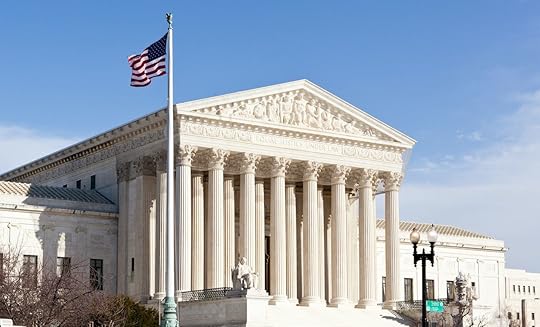
The US Supreme Court ruled that a huge chunk of Oklahoma, including much of Tulsa, falls within a Native American reservation.
The decision was a response to McGirt v. Oklahoma, in which Jimcy McGirt, a member of the Seminole Nation, was found guilty on the state level of a sex crime that happened within the Muscogee (Creek) Nation’s historical boundaries in 1997. McGirt argued that only federal authorities could prosecute him since state authorities have no power on Native American reservations.
The ruling overturned McGirt’s prison sentence though he could still be tried in federal court.
The Supreme Court ruling declares that Native Americans living on tribal lands can only be found guilty by federal prosecutors. This strips state courts of the power to prosecute Native Americans accused of crimes within tribal jurisdiction.
[image error]
Photo: Oklahoma Transportation
The Native American land in Oklahoma comprises three million acres, with a population of 1.8 million, 15 percent of which is Native American.
Supreme court Justices decided five-four for this ruling. Conservative Justice Neil Gorsuch sided with the court’s four liberal members on the matter, explaining that the United States must abide by the promise made in the 1830s that gave the Creek a permanent land in Oklahoma. 
More like thisCulture11 important Native American heritage sites in the US that you need to visit
The post Supreme Court rules that half of Oklahoma is a Native American reservation appeared first on Matador Network.

Baby loggerhead turtles emerge
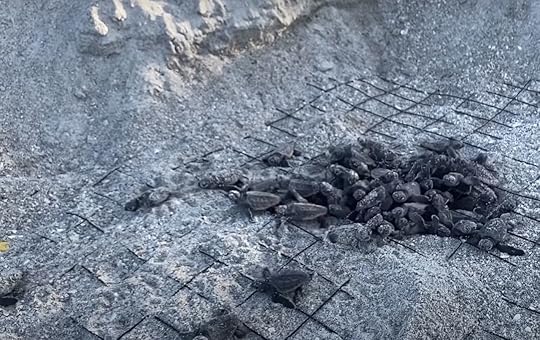
Something small but magnificent happens on the Sanibel and Captiva islands in Florida, after the snowbirds head north for the summer. It’s called an eruption and it’s officially the cutest thing you’ll ever see. Every summer, baby loggerhead turtles emerge from their nests underneath the sand and make their way toward the sea. The “boil” happens when the sand on top of their nest begins to toss and tumble as the young sea turtles work their way out; once they are out, the event becomes an “eruption.”
Pushing through the top layer of sand in disheveled unison, the sea turtles appear almost as a single organism — until you realize each dark spot you see is actually an individual turtle working its way to freedom. Upon surfacing, a moment of chaos ensues as the baby turtles determine which direction they need to head to reach the ocean. But the call of the waves and a seriously effective internal compass leads them home, and after a mad dash, they reach their destiny.
Fortunately, Sanibel Captiva Conservation Foundation’s coastal wildlife director was on hand to not only capture the event on video, but to make sure the turtles reached the ocean without threat. The organization works to preserve the habitat for loggerhead and other sea turtles. More than 500 nesting events now happen each year along the beaches of Fort Myers, Sanibel, and Captiva, a number that has increased year after year since the organization began its work. 
More like thisNews15 Galapagos tortoises finally return home after saving their entire species
The post This video of baby sea turtles emerging from their nests has officially saved summer appeared first on Matador Network.

Hagia Sophia changing to mosque

Hagia Sophia, one of Istanbul’s most famous landmarks, is transitioning away from its museum status and reverting back to a religious institution — but not the same one for which it was founded. It was originally built as a cathedral 1,500 years ago, then the Ottomans later turned it into a mosque, and in 1934 it became a museum. Now, Turkish President Recep Tayyip Erdogan has signed a decree for Hagia Sophia to be converted back into a mosque.
The move is controversial. Since 1934, it has been a symbol of secularism that welcomes all faiths. Islamists in Turkey, however, have long advocated for the building to become a mosque, against more secular opposition.
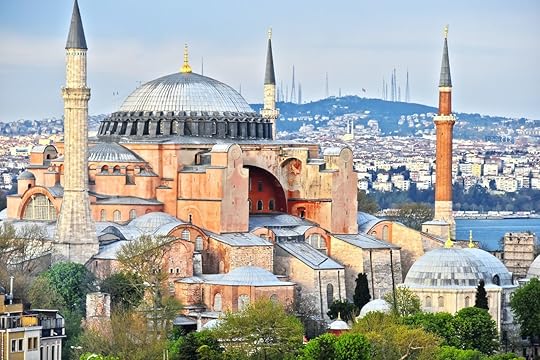
Photo: monticello/Shutterstock
Turkey’s Council of State, however, said, “It was concluded that the settlement deed allocated it as a mosque and its use outside this character is not possible legally. The cabinet decision in 1934 that ended its use as a mosque and defined it as a museum did not comply with laws.”
On Friday, Erdogan signed a decree handing over Hagia Sophia to Turkey’s religious directorate, which will open the building up to worshipers. 
More like thisArt + Architecture7 of the world’s coolest-looking churches you didn’t know existed
The post Istanbul’s Hagia Sophia will be converted from a museum into a mosque appeared first on Matador Network.

Positive environmental news for July
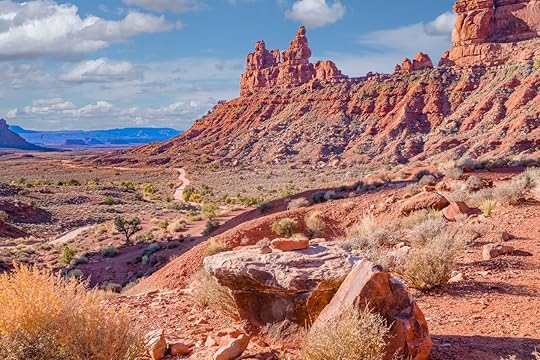
This is The Climate Win, the most positive sustainability news around the world every week.
If you read a lot of environmental news, the term “tipping point” likely doesn’t calm your mind. In climate science, “tipping points” typically refer to the earth being on the brink of disaster, such as a mass extinction or rising sea levels. But let’s shift the tipping point paradigm in our favor.
Today, we’re on the brink of what might be the most important tipping point of our lifetime: the point where conserving land and water actually does more to benefit the economy than developing or exploiting it. This is true whether we’re talking about jobs, GDP, or travel.
Until now, NGOs and activists fighting fiercely to preserve the natural environment have often lost to big-money industries such as energy and property development. But today there’s an increased desire for outdoor recreation opportunities in developed countries. Across the American West, cities like Grand Junction, CO; Vernal, UT; and Farmington, NM, are experiencing firsthand the financial benefits of shifting economic focus from oil and gas development to recreation and conservation. Some parcels of land surrounding these places that have long been leased for oil and gas development are being repurposed, often for outdoor recreation sites like trail systems for hiking, biking, off-roading, and other activities.
This is happening partly because coal power plants are being consistently retired as renewable energy and natural gas become cheaper than coal power, and partly because people just want to get outside. Adventure tourism is now the fastest-growing niche in travel, according to the Adventure Travel Trade Association. The result is that across the United States and beyond, using land for recreation and conservation is becoming more lucrative for both the public and private sectors than developing it.
In line with the boom in outdoor recreation is a continued shift in public opinion toward conservation. With images of the burning Amazon and starving polar bears making the rounds in traditional and social media, awareness of human-caused global devastation is at an all-time high. People want to be part of the solution, and they’re more willing than ever to spend money on travel, products, and campaigns that coincide with their values. A new report from the charity Campaign for Nature cites scientific studies showing the global economic benefit to protecting 30 percent of the land and water worldwide.
“Our report shows that protection in today’s economy brings in more revenue than the alternatives and likely adds revenue to agriculture and forestry, while helping prevent climate change, water crises, biodiversity loss and disease. Increasing nature protection is sound policy for governments juggling multiple interests. You cannot put a price tag on nature — but the economic numbers point to its protection,” said the report’s lead author Anthony Waldron in a press release.
The report notes that a global annual investment of $140 billion toward reaching and maintaining this conservation milestone would return an average annual economic output of $250 billion. You don’t have to be a Wall Street investor to know that’s a heck of a deal.
In the US, a bill was recently introduced to cover our portion of the deal. The Great American Outdoors Act was introduced by Senator Tom Udall of New Mexico in June, aiming to protect 30 percent of the US’ land and water by 2030 and setting the course to protect 50 percent by 2050. We’ll likely need to wait until a new administration takes over the White House or the Democrats flip the US Senate to see this bill become law, but the conversation has at least begun.
Until then, remember “the tipping point” the next time you find yourself in a conversation that includes the phrase, “But what about THE ECONOMY?” The shrinking of Bears Ears and Grand Staircase Escalante national monuments is actually a big deal, from all angles — including financially. The economic benefits of conserving that land for the long-term far outweigh the short-term profits of a few private companies, and those benefits are spread to Native American tribes, local and regional governments, and the entire outdoors industry. The tipping point is here and the conservationists now have the force of the almighty dollar on their side, the only thing that seems to appease the development crowd.
And, be sure you’re registered to vote in this November’s presidential election.
Matador Network has covered these issues extensively, with reports from Vernal, British Columbia, and elsewhere. Follow our Outdoors section and sign up for our newsletters for the latest.
More Climate Wins this week:
The Standing Rock Sioux Tribe and the Cheyenne River Sioux Tribe, along with other environmental activists fighting major oil pipeline projects, received good news this week. The Atlantic Coast Pipeline, which was scheduled to be built underneath the Appalachian Trail, was canceled due to rising costs and delays, The New York Times reported on Monday. The heavily controversial Dakota Access Pipeline, which moves oil from North Dakota to Illinois and was the source of major protests in 2016, has been ordered to stop operating pending an environmental review, according to NPR. And the Supreme Court has halted production of the equally controversial KeystoneXL Pipeline.
Sydney, Australia, joined the 100 Club. The City of Sydney, the central borough in the larger metropolis of over 5 million residents, has powered itself on 100 percent renewable energy since July 1, thanks to massive investment in solar and wind power in New South Wales and the prioritizing of the transition by Lord Mayor Clover Moore.
Scientists may have found a new technique to pull CO2 out of the air. Enhanced rock weathering, or ERW, is the technical term for the process of adding rock dust to vast stretches of farmland. According to a report in The Guardian, basalt and limestone are the best types of rock to pull CO2 out of the air, and recent studies have shown that the practice can actually benefit crop production — potentially making this the best short-term solution to climate change, along with cutting back on emissions in the first place. 
More like thisSustainabilityWhen you fly, don’t just offset your CO2. Get rid of it.
The post Conserving land is now more economical than exploiting it appeared first on Matador Network.

July 9, 2020
Black and Brown surfing community
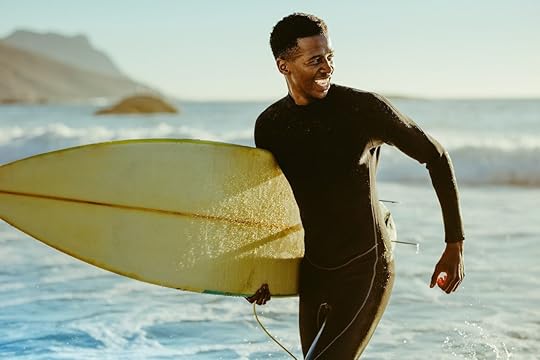
When Dionne Ybarra was a young girl growing up in a Mexican farming community of East Salinas, she remembers the occasional trips her family would make to the beach 20 miles away from their home in Central California. While she enjoyed playing in the sand, the ocean itself was something to be feared. It was not a part of her Mexican family’s culture, and it never occurred to her then that it could become part of her own.
Even when she married a surfer, Ybarra herself didn’t take to the waves. After a divorce, Ybarra says she taught herself to swim and, eventually, at the age of 37, learned to surf. The experience encouraged Ybarra to start The Wahine Project, which teaches other Latina girls to discover the ocean and learn to surf.
The white face of surfing
“Surfing is glorified in mainstream culture, but it’s one identity,” says Ybarra of popular notions of the male, white, blond surfer. Ybarra says that changing perceptions for her surf students of what a surfer looks like “opens them up to a world that they didn’t know they could be a part of.”
The lack of broad representation out in the lineup — the place in the water where surfers congregate, jostling to catch the next incoming wave — is a well-known concern in the world of surfing.
“Surfing is a very white sport, especially in the US,” says Becky Mendoza, co-founder of the Changing Tides Foundation, in an email exchange with Matador. “It is extremely rare to see a person of color in the lineup. We really need this to change.”
Christopher Ragland says he was lucky to have learned to surf together with a Black friend when he was growing up in San Pedro, California. Now a resident of Santa Barbara, Ragland said that out on the water, “I’m kind of used to being the token Black guy.”
Ragland, who organized a “CommUnity Paddle-Out” in support of Black Lives Matter on Santa Barbara’s Leadbetter Beach in early June, says he feels he’s seen more Black surfers in recent months, but that it remains a sport Black kids don’t see they can be a part of.
“I’d like to see Black and Brown people at least somewhere in surf culture,” says Ragland, noting that brands like Billabong and Ripcurl don’t really speak to young people of color.
Changing the narrative
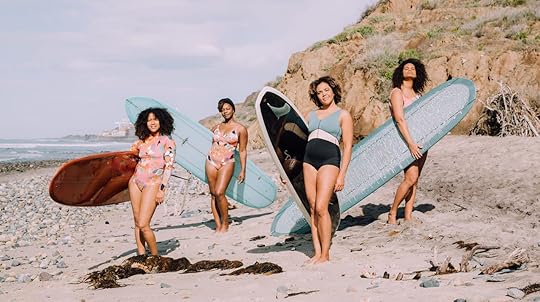
Photo: Textured Waves/Facebook
That lack of representation is what inspired Chelsea Woody, Danielle Black Lyons, Gigi Lucas, and Martina Duran to found Textured Waves, whose tagline is “Women of all shades, riding the waves.”
Since creating the group to “propagate the culture and sport of women’s surfing towards women of color and underrepresented demographics,” the founders of Textured Waves write via email that they’ve seen a growing interest in changing the narrative. “In the current state of the world, it appears that surfers are examining their surroundings and also want to play a part in the larger conversation globally to be more inclusive in their own communities.”
The surf world hasn’t always been that open. When Ybarra started her surf camp 10 years ago, she was met with pushback. “There was some resistance in the surf community, surprisingly… It seemed like it was the white good old boys club,” she says. Ybarra asked herself, “‘Do they not want us to be successful because I’m a woman, because I’m Mexican?’ So there was years of unkindness from a section of the community that really shocked me.”
Issues of access
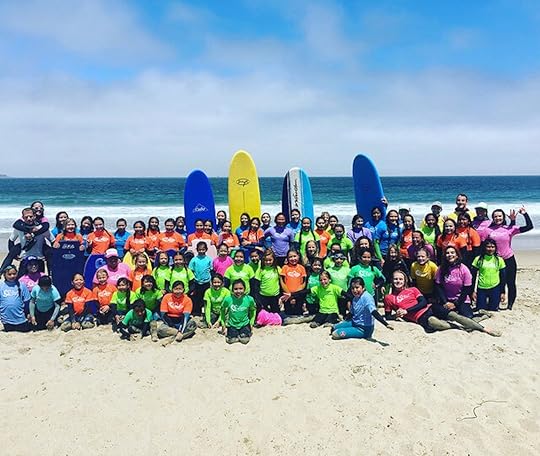
Photo: The Wahine Project
Even where attitudes are beginning to change, the issue is exposing Black and Brown children, and even adults, to the ocean and surfing in the first place. Access is an issue that Mendoza of Changing Tides believes, “has everything to do with systemic racism in America.”
As Mendoza explains, “Black communities are not typically located near the ocean, where real estate value makes it unaffordable for most people to live, at least on the California Coastline. Then there’s equipment: wetsuits, surfboards, leashes, transport, which all carry a hefty price tag. It all makes it incredibly inaccessible to those who can’t afford these luxuries.”
Chris Ragland agrees that access is a “huge” issue, and believes that if more Black youth learned to surf, at least some of them would excel. He’d like more of them to spend time in the water and see that there are other sports open to them besides, say, skateboarding and basketball.
“I’m not saying the best surfer needs to be Black,” says Ragland. “But we’re not seeing the best surfers in the world. We’re seeing the best surfers with access to surfing.”
In addition to organizations like Ybarra’s Wahine Project, Mendoza says, “nonprofits like Stoked Mentoring, City Surf Project and Brown Girls Surf that are doing amazing things to create accessibility.”
Expanding the look of surf culture
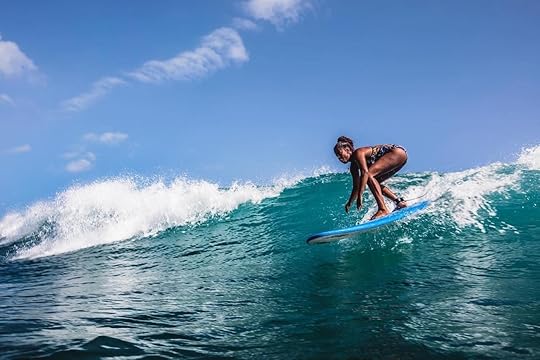
Photo: Changing Tides Foundation/Facebook
Beyond introducing more kids to surf, these advocates say it’s important to have those kids see themselves reflected in surf culture. As the women at Textured Waves noted, “normalizing the imagery” is as much a part of the solution as creating “access to aquatic and leisure spaces” and “providing resources for folks to actively participate.”
Besides providing the resources, by offering her surf camp for free to the kids from East Salinas, funded by donations and the revenue of paying kids from wealthier coastal towns, Ybarra says that many of the surf instructors at her camp are Mexican-American, like herself.
But the image of surfing needs to be broader for the mainstream community, and it shouldn’t just be up to individual surfers to show up and be seen. “I think surf brands should be marketing more to people of color, diversifying their staff and team riders to be more representative of the general population. That will make everyone more welcomed into the sport,” says Mendoza.
For his part, Santa Barbara surfer Ragland, who’s a graphic designer, says he hopes to launch a surf brand with influences from hip-hop culture and which can speak more directly to the young Black people in his community.
Sharing the joy and stretching the horizon

Photo: The Wahine Project
Why does all of this matter? For one, the joy that surfing brings should not be reserved for a privileged few. For Ragland, the act of surfing is “poetry in motion,” and it’s an experience he wants more people who look like him to be able to appreciate.
“You can experience a form of meditation that is so active, but that still provides so much stillness after,” he says.
A connection to the ocean is also a gift that can benefit the wider community. Ybarra says that in introducing young kids from East Salinas to the ocean, whether they grow up to become surfers or not, they see dolphins or whales and develop an appreciation and concern for the ocean environment. This is important, says Ybarra, since disadvantaged communities “are more at risk for all the negative aspects of climate change.”
Moreover, by telling kids that a sport that, from the outside, can seem not only male and white but also downright intimidating is something that they too can do, she’s conveying a broader message. She wants the kids she’s teaching to paddle hard for an incoming wave to know that they can accomplish whatever they set their mind on.
“It’s opening them up to a world that they didn’t know they could be a part of,” says Ybarra. “When they see and they go, ‘Oh my gosh, I can do that kind of stuff. I can get over this fear. I can move through that fear,’ I think it shows them that’s just one barrier. Then they can see that, and they can move it over to the next thing in their life.”
Ragland feels much the same. “If you’re not raised by the ocean, chances are you’re going to be intimidated by the ocean,” he says. But when you do “get out on the water and travel, it broadens your perspective. You think so much bigger than your block.”
Everyone has a part to play
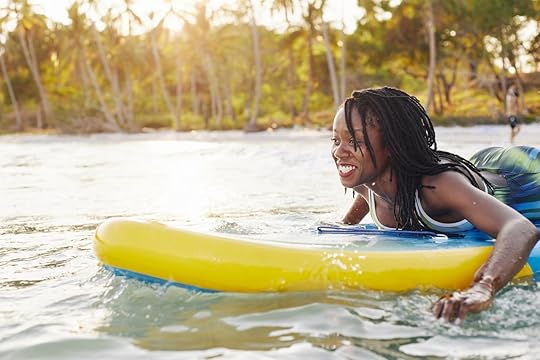
Photo: Dragon Images/Shutterstock
To make that possible, we all have a part to play. Certainly, surfers who come from more privileged backgrounds can work to introduce the sport we love to others and welcome the interest of those who have traditionally not been able to participate. Those who don’t surf, yet flock to the beachy fashions of big-name surf brands, can demand to see more representation from those brands.
“To make real change, it starts in your own backyard with your family and friends and in your immediate community. Everyone can’t do everything, but focusing on areas that you are already passionate about can create the biggest change. When we do this we can begin to see generational shifts and changes in behavior,” say the women at Textured Waves.
The ultimate goal will be seen in the water. “We want to see lineups that are more representative of our population here in the US, which is people of all races, shapes, sizes, colors, sexual preferences, and genders from all walks of life,” says Mendoza.
Ragland, who says this topic is one that keeps him up at night, acknowledges that it may take time. But he looks forward to the day when more Black and Brown surfers will see for themselves that, no matter what happens on land, “The ocean isn’t judgmental … It’s a place you can rely on.” 
More like thisOutdoor16 epic BIPOC voices in the outdoor world that will stoke your next adventure
The post Diversifying the lineup: changing the white face of surfing appeared first on Matador Network.

Resígaro endangered language

There are approximately six thousand languages spoken in the world right now, and around five thousand are spoken only by indigenous peoples. Due to geographic isolation and cultural insulation, these languages are often at the greatest risk of extinction. Resígaro, an Upper Amazonian language spoken by the Arawak peoples of Peru, is considered the world’s most endangered language, with just one surviving speaker.
The history of Resígaro
Resígaro first received attention from the academic community in the 1950s, when the Summer Institute of Linguistics created a book on Resígaro with the aim of translating the Bible into the Resígaro language. At first, researchers believed the language fell into the Huitotoan language family, though further study revealed that it belonged to the Arawakan family — a language group defined by polysynthetic words.
The Arawakan language family is the largest language family in South and Central America. Due to its deep and widespread roots, protecting Arawakan languages is important to preserve the culture of the speakers, as well as the culture of the entire region. Many Awawakian languages are endangered, but with one remaining speaker, Resígaro is by far at the highest risk of extinction.
During the rubber boom in the first half of the 20th century, the English-Peruvian rubber company Casa Arana was responsible for the enslavement of thousands of indigenous Resígaro and Ocaina people. Colonists used their labor to extract rubber, and thousands of Resígaro and Ocaina people died of exhaustion and disease introduced by foreigners. The Resígaro tribe was so decimated that its members ended up living among the Ocaina, and its language quickly faced extinction.
The last speaker
As of 2016, there were two remaining speakers of Resígaro — Pablo Andrade and his sister, Rosa. In November 2016, 67-year-old Rosa was found mysteriously beheaded in her home in the Peruvian Amazon. The local community suspects the murderer was an outsider, but both her killer and the reason for the murder are still unknown. Rosa had been the last female speaker of Resígaro, as well as one of the last speakers of the Ocaina language.
Upon his sister’s tragic and sudden death, Pablo Andrade who was 65 at the time, became the last known speaker of Resígaro. Although he no longer has anyone to speak to in his native tongue, Pablo is doing his best to preserve the language for future generations and keep it from dying out completely, working with the Peruvian government on initiatives to preserve Resígaro.
Resígaro today
Before Rosa’s death, the Peruvian Ministry of Culture was working with her and Pablo to revise books on Resígaro grammar for the sake of historical record and continuing education. Rosa had also taught children Resígaro songs and stories in the native tongue, in hopes of preserving the language. After her death, Pablo is continuing that preservation project. The government is collaborating with Pablo to catalog the language, compile Resígaro-related resources, and fill in any gaps in knowledge about the language’s vocabulary, grammar, and structure. Linguists are hoping to learn as much as they possibly can from Pablo before the language slips into total obscurity.
The great thing about languages, however, is that as long as one person still speaks it, they aren’t truly dead. That means if you go online and learn a few Resígaro phrases, you’re doing your part to keep this critically endangered language alive. Whether you’re a professional linguist or just interested in learning more about a unique South American culture, you can teach yourself some Resígaro words using this online database. 
More like thisLanguages25 endangered languages you need to listen to before they disappear
The post Resígaro is the Amazonian language with only one remaining speaker appeared first on Matador Network.

Penguin relationship flowchart

If you thought keeping track of your friends’ shifting relationship statuses was confusing, try making sense of the love lives of aquarium penguins. To help them better understand the complex, tangled web of penguin relationships, Tokyo’s Sumida Aquarium and Kyoto Aquarium have created flowcharts documenting the penguin romances of 2020.

Photo: Kyoto Aquarium
To the layman, the flowcharts might appear more complex than the documents on a rocket scientist’s desk. But color-coded lines and symbols make it easy for aquarium staff to track the various penguin romances happening under their very noses. Red hearts, for example, signify couples, while purple lines with question marks indicate more complicated relationships. A blue, broken heart points to an affair, yellow lines mean friendship, and green connects enemies.
Shoko Okuda, a spokeswoman for the aquariums, told CNN, “We’d like more people to know that penguins are like us humans; each of them has individuality and they live in various relationships. What is written in the maps is based on everyday observations from the staff taking care of the penguins. By observing carefully, they could tell which penguins are couples or which couples are broken up.”
While the charts may not mean much to the casual observer — especially if you don’t read Japanese — they do provide an interesting insight into the romantic world of penguins.
And if you’ve ever frequented the bars in a small town, you might be able to relate to this chart more than most. 
More like thisWildlifeWhere to see all of the internet’s favorite animals in real life
The post Behold this Japanese aquarium’s complex flowchart of penguin relationships appeared first on Matador Network.

Trump Tower Black Lives Matter mural

There’s a massive graffiti project going on in New York City right now, but it’s not exactly the work of unsanctioned hoodlums. Fifth Avenue, between 56th and 57th streets, is closed today as the city paints a massive Black Live Matter mural on the pavement. Even more notable than the giant yellow letters themselves is that it’s located directly in front of Trump Tower.
Mayor Bill de Blasio, who is participating in the project, said he wants to communicate a clear message to President Trump that Black lives do matter and make sure that the message is in a location impossible for the president to ignore.
From Fifth Avenue to Fulton Street to Richmond Terrace, NYC has a message for the world: #BlackLivesMatter pic.twitter.com/wtkzCHpURm
— NYC Mayor's Office (@NYCMayorsOffice) July 9, 2020
On Facebook, de Blasio said, “Black people built Fifth Avenue and so much of this nation. We are honoring them.”
Trump, of course, lashed out on Twitter, claiming that the Black Lives Matter sign is “denigrating this luxury Avenue” and “will further antagonize New York’s Finest, who LOVE New York.”
Hundreds of gallons of paint are being used for the mural, which could take a few days to complete. Until it’s finished, the area in front of Trump Tower will likely remain closed. 
More like thisNewsHow to support Black Lives Matter protests if you can’t be there in person
The post NYC is painting a giant Black Lives Matter mural in front of Trump Tower appeared first on Matador Network.

Matador Network's Blog
- Matador Network's profile
- 6 followers



